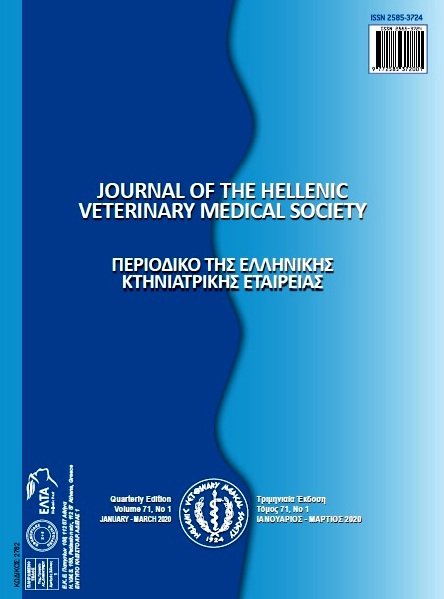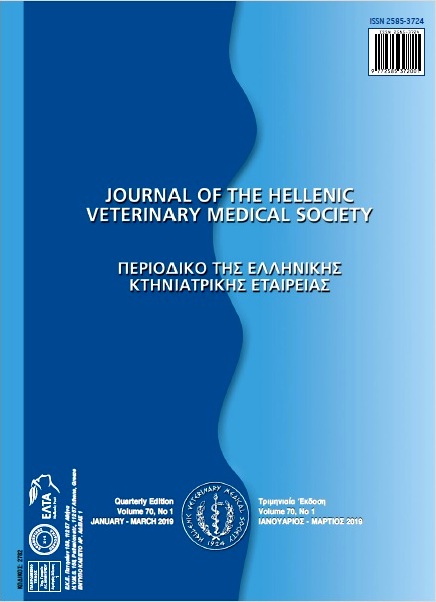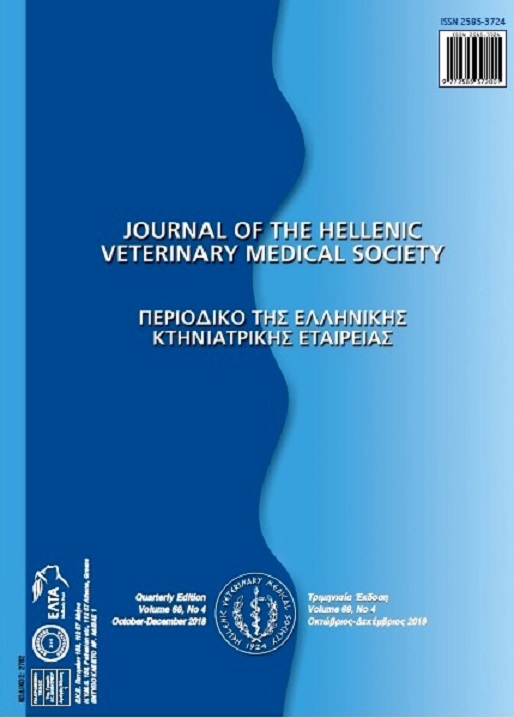Effect of nebulized formoterol, ipratropium bromide, and furosemide in combination with fluticasone propionate on arterial blood gases of premature calves with respiratory distress syndrome
Abstract
The purpose of this study was to assess the clinical effect of nebulized formoterol (FM), ipratropium bromide (IB) and furosemide (FS) combined with fluticasone propionate (FP) on l ung function in premature calves with Respiratory Distress Syndrome (RDS). Thirty-six premature calves with RDS were randomly assigned to six different treatment groups (D1 to D6). All groups received the standard treatment, including oxygen and support treatment. Calves in D1 received only the standard treatment. The following combinations of nebulized drugs were used for the other groups: D2: FP, D3: FP+FM; D4: FP+IB; D5: FP+FS and D6: FP+IB+FM+FS. The treatment period (72 h) involved the application of FM (15 μg totally/12 h), IB (2 μg/kg/12 h), FS (1 mg/kg/12 h) and FP (15 μg/kg/12 h) for five minutes. A significant increase over time in blood pH, partial pressure of oxygen (PaO2), oxygen saturation (SatO2) and a decrease in partial pressure of carbon dioxide (PaCO2) and lactate were detected in all groups that received nebulized treatment; while in the D1, a significant change was observed only for PaCO2. Calves in D6 had the highest PaO2 and lowest PaCO2 values amongst all groups at the end of treatment. No statistical difference was observed between the Nebulization Groups (NG). Nebulized FM, IB and FS with FP combination in premature calves with RDS, in addition to the standard treatment showed a significant curative effect on lung function.
Article Details
- Come citare
-
OK, M., YILDIZ, R., TRAŞ, B., BAŞPINAR, N., & AKAR, A. (2020). Effect of nebulized formoterol, ipratropium bromide, and furosemide in combination with fluticasone propionate on arterial blood gases of premature calves with respiratory distress syndrome. Journal of the Hellenic Veterinary Medical Society, 71(1), 2011–2018. https://doi.org/10.12681/jhvms.22949
- Fascicolo
- V. 71 N. 1 (2020)
- Sezione
- Research Articles

Questo lavoro è fornito con la licenza Creative Commons Attribuzione - Non commerciale 4.0 Internazionale.
Authors who publish with this journal agree to the following terms:
· Authors retain copyright and grant the journal right of first publication with the work simultaneously licensed under a Creative Commons Attribution Non-Commercial License that allows others to share the work with an acknowledgement of the work's authorship and initial publication in this journal.
· Authors are able to enter into separate, additional contractual arrangements for the non-exclusive distribution of the journal's published version of the work (e.g. post it to an institutional repository or publish it in a book), with an acknowledgement of its initial publication in this journal.
· Authors are permitted and encouraged to post their work online (preferably in institutional repositories or on their website) prior to and during the submission process, as it can lead to productive exchanges, as well as earlier and greater citation of published work.





